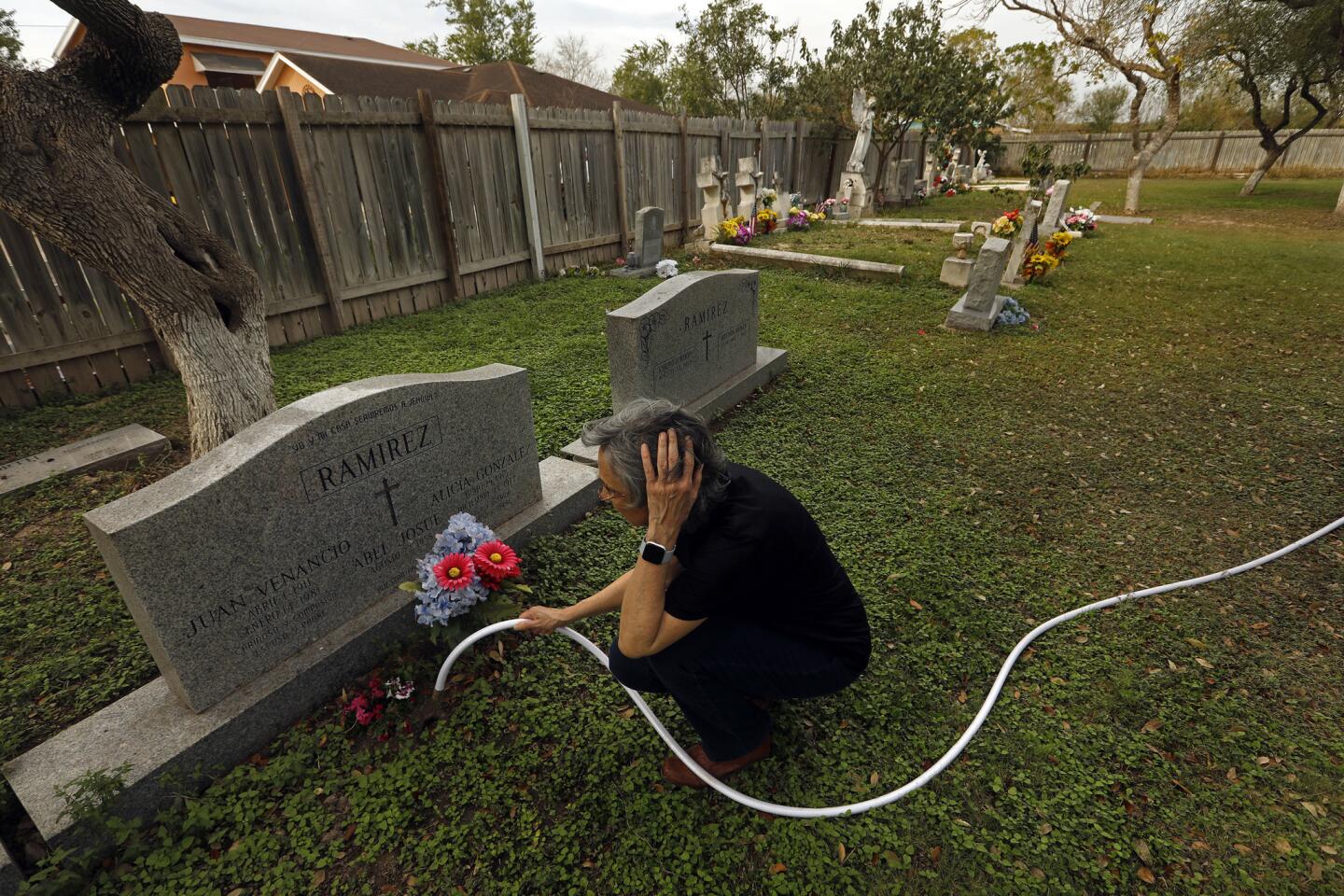Last year, the Trump administration started preparations to build a border fence through some Texas cemeteries. Homeland Security Department officials waived laws designed to protect sacred sites, flouting the age-old prohibition against disturbing the dead.
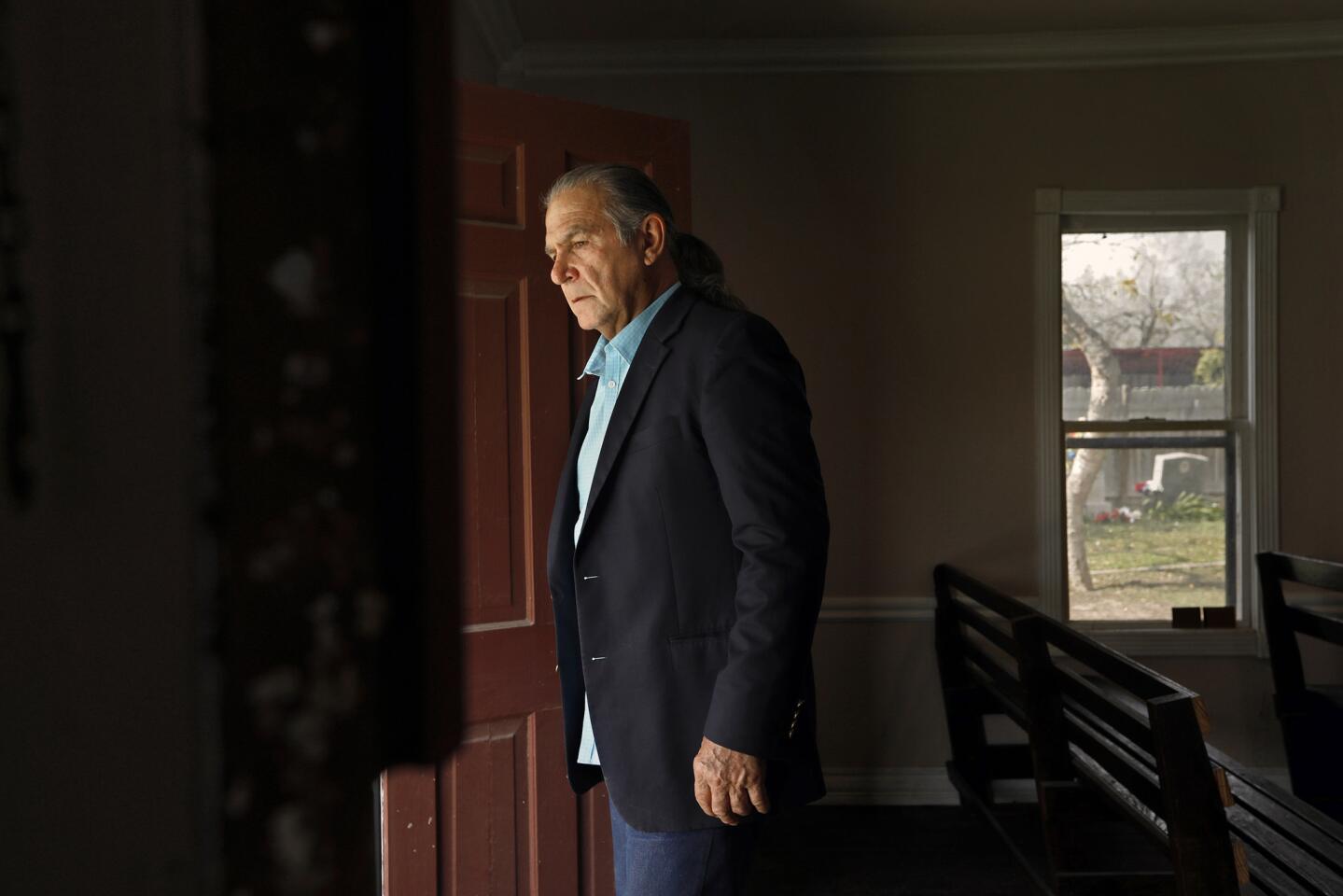
Ramiro Ramirez of Mission, Texas, has responsibility over Jackson Ranch Church, where many of his ancestors are buried. He and his relatives are worried that a border fence will cut them off from the church and cemetery.
(Carolyn Cole / Los Angeles Times)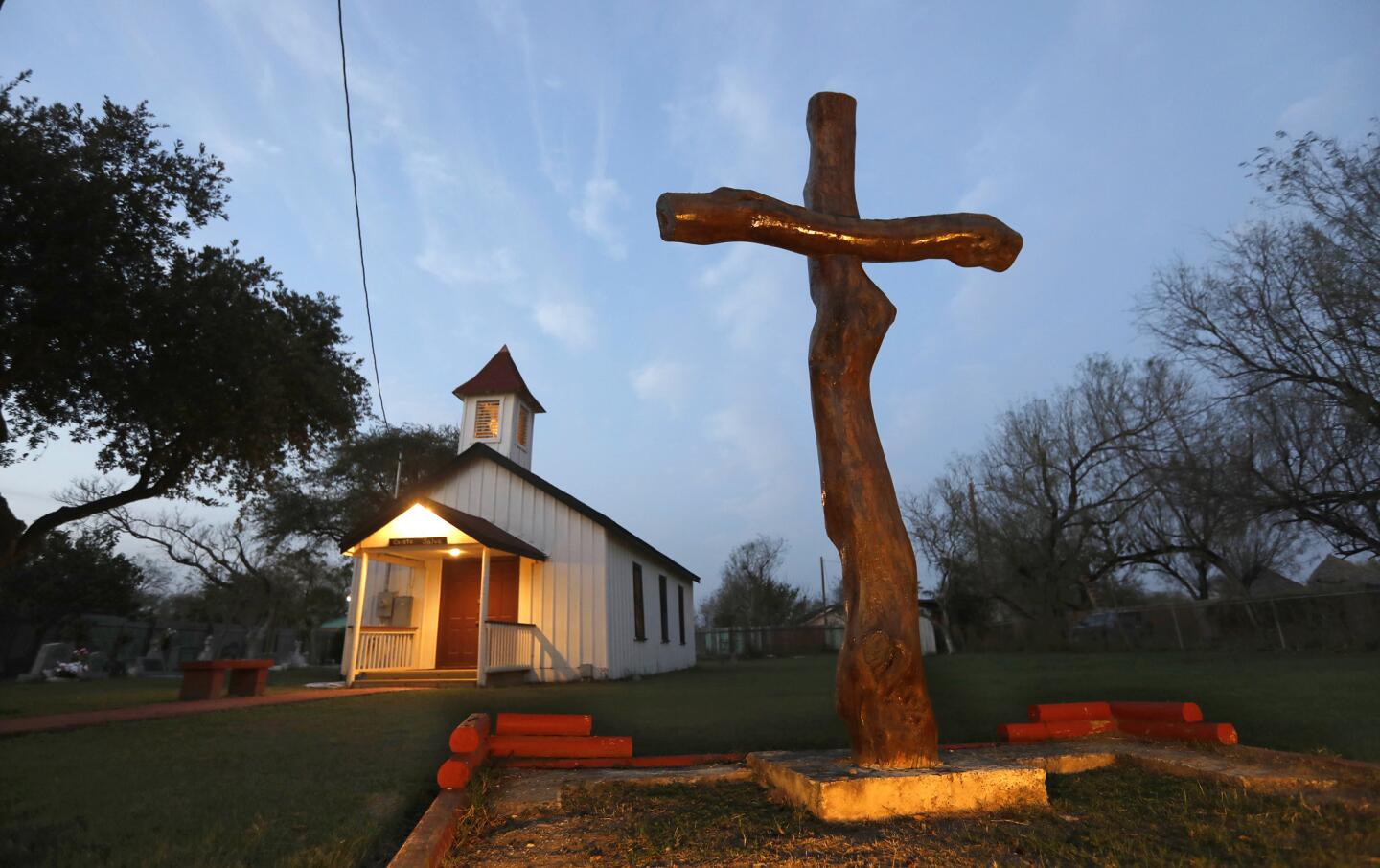
The Jackson Ranch Church.
(Carolyn Cole / Los Angeles Times)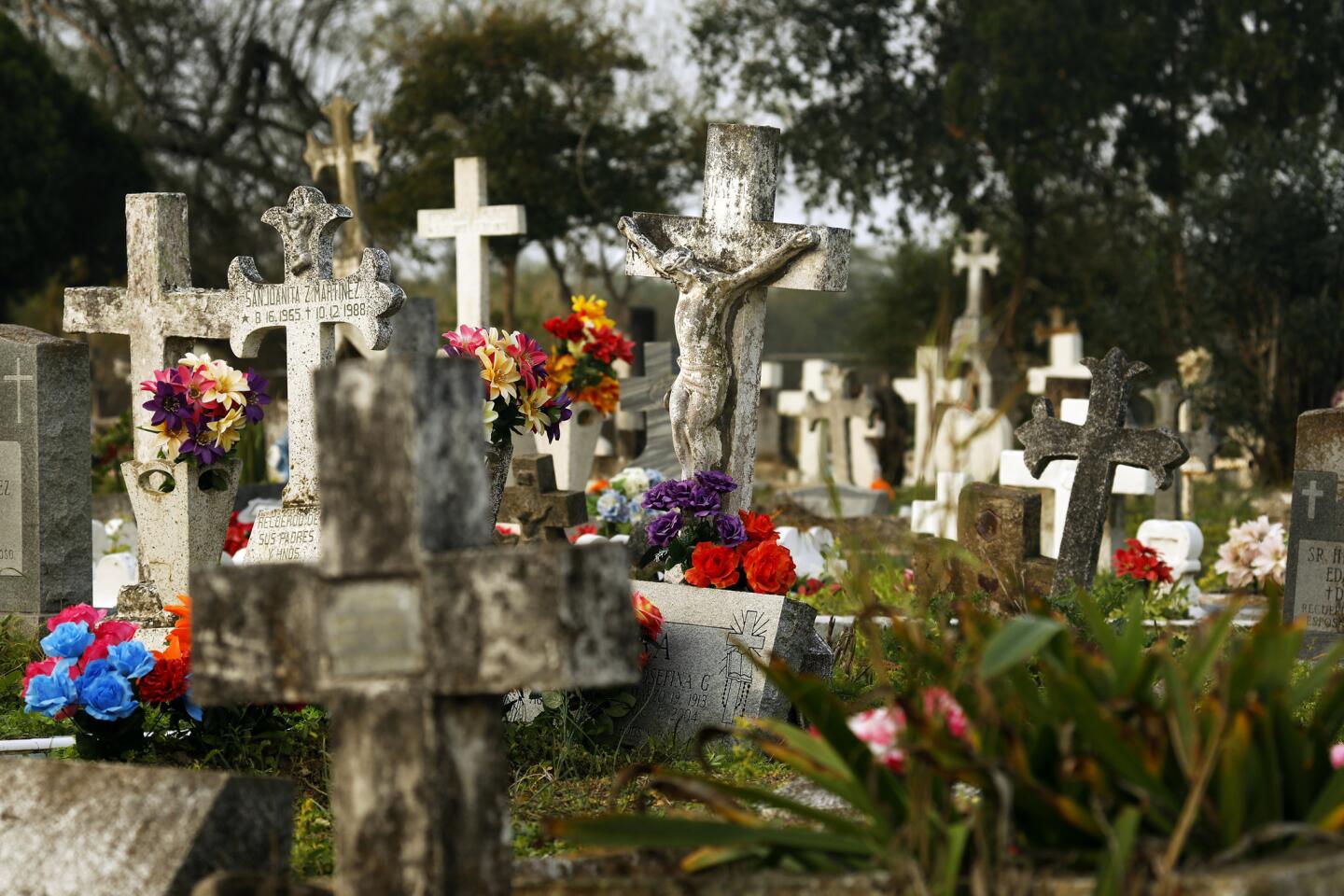
Santa Rosalia Cemetery is on the south side of the border wall near Brownsville, Texas. It may be completely off-limits if gaps in the fence are closed.
(Carolyn Cole / Los Angeles Times)Advertisement
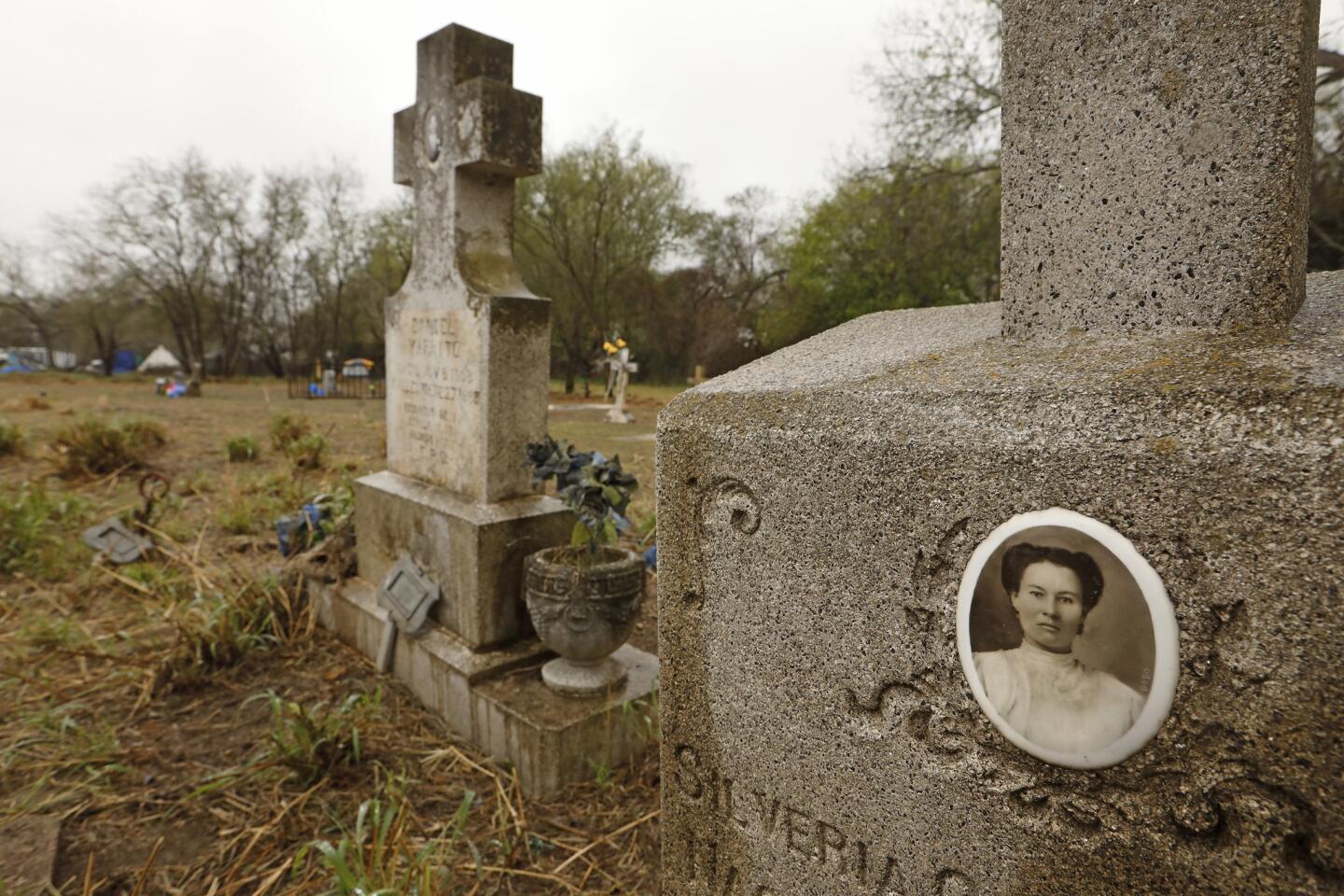
Graves in the Eli Jackson Cemetery, near the Jackson Ranch Church.
(Carolyn Cole / Los Angeles Times)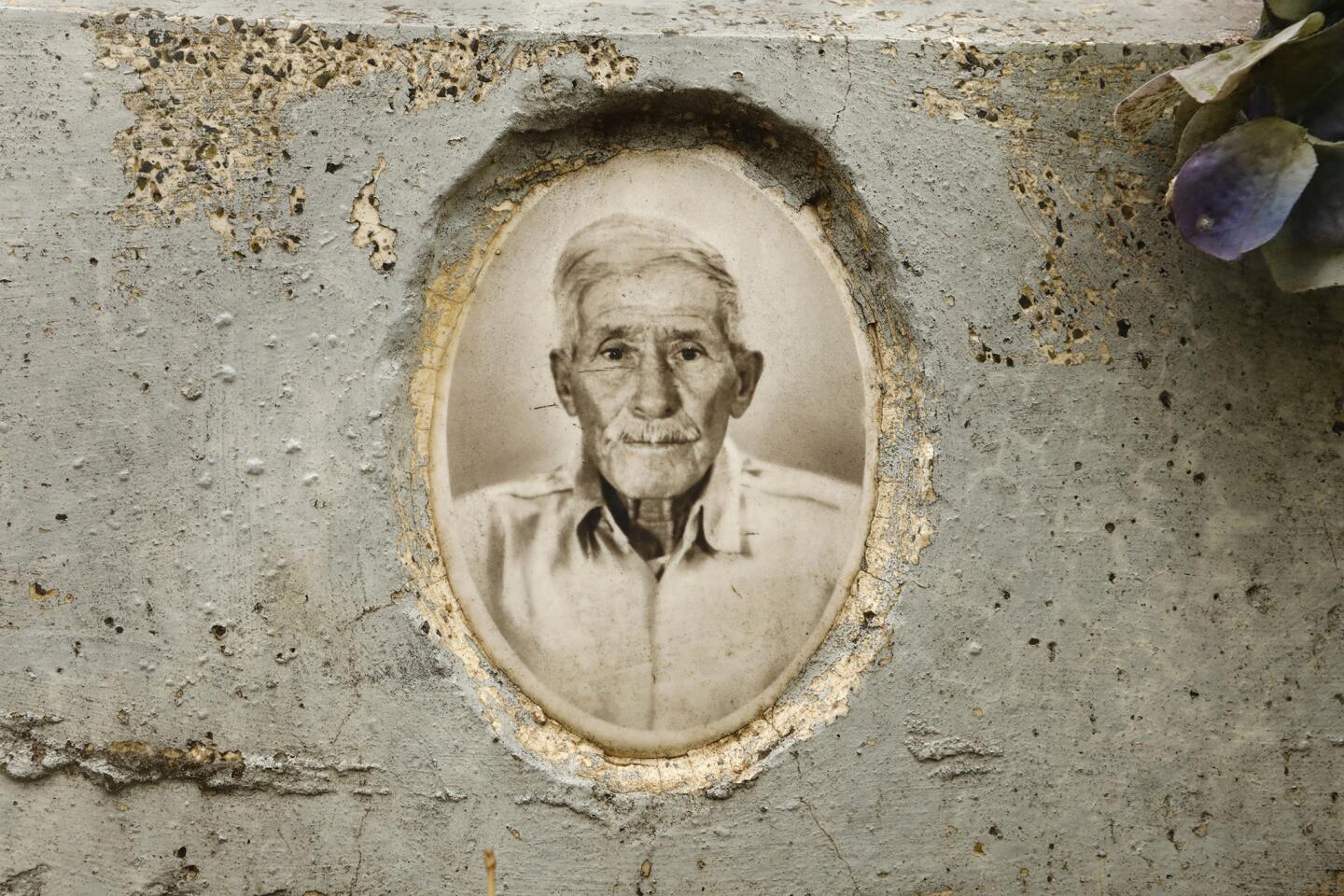
Saturnino Blas Cantu is buried in Eli Jackson Cemetery.
(Carolyn Cole / Los Angeles Times)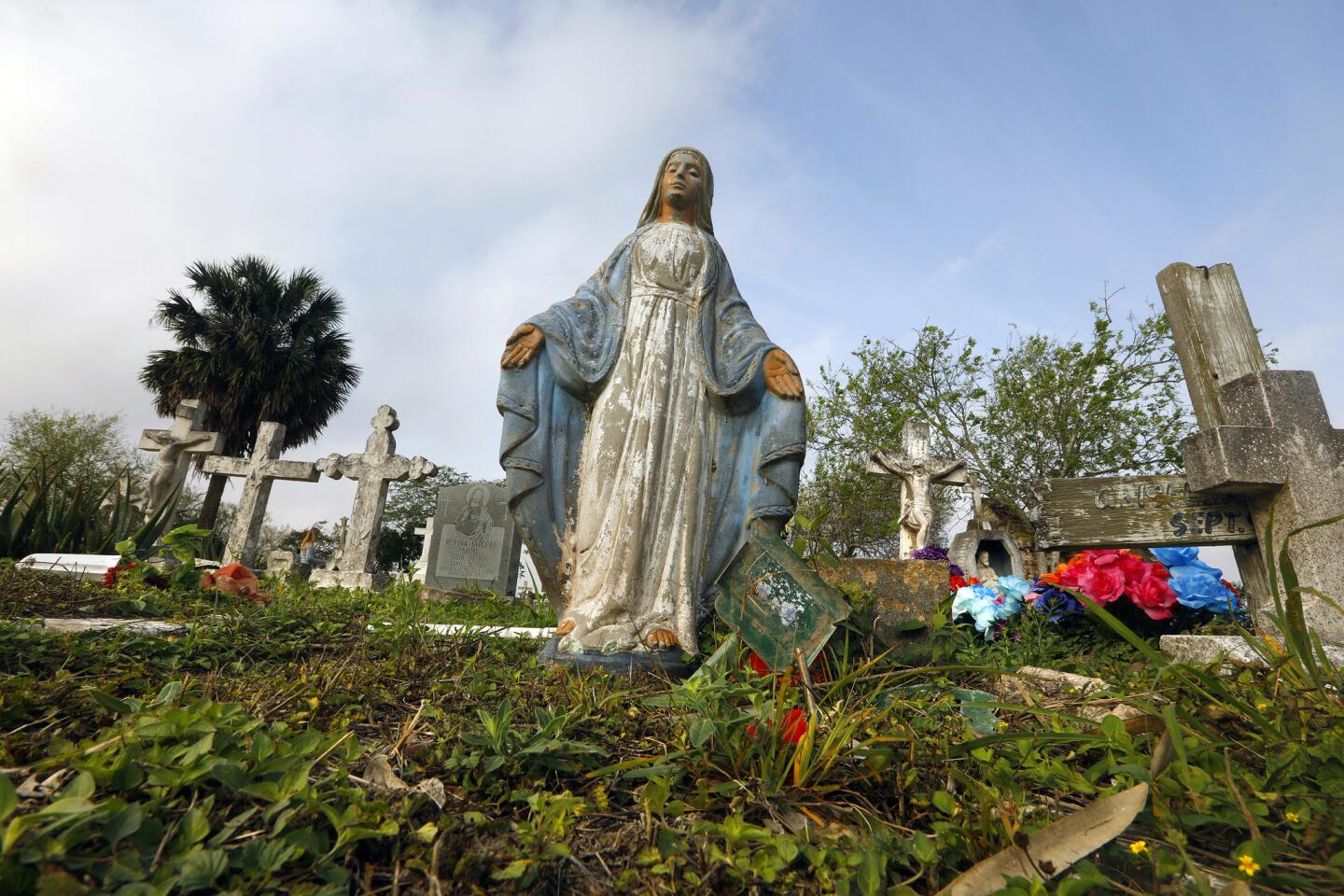
Santa Rosalia Cemetery.
(Carolyn Cole / Los Angeles Times)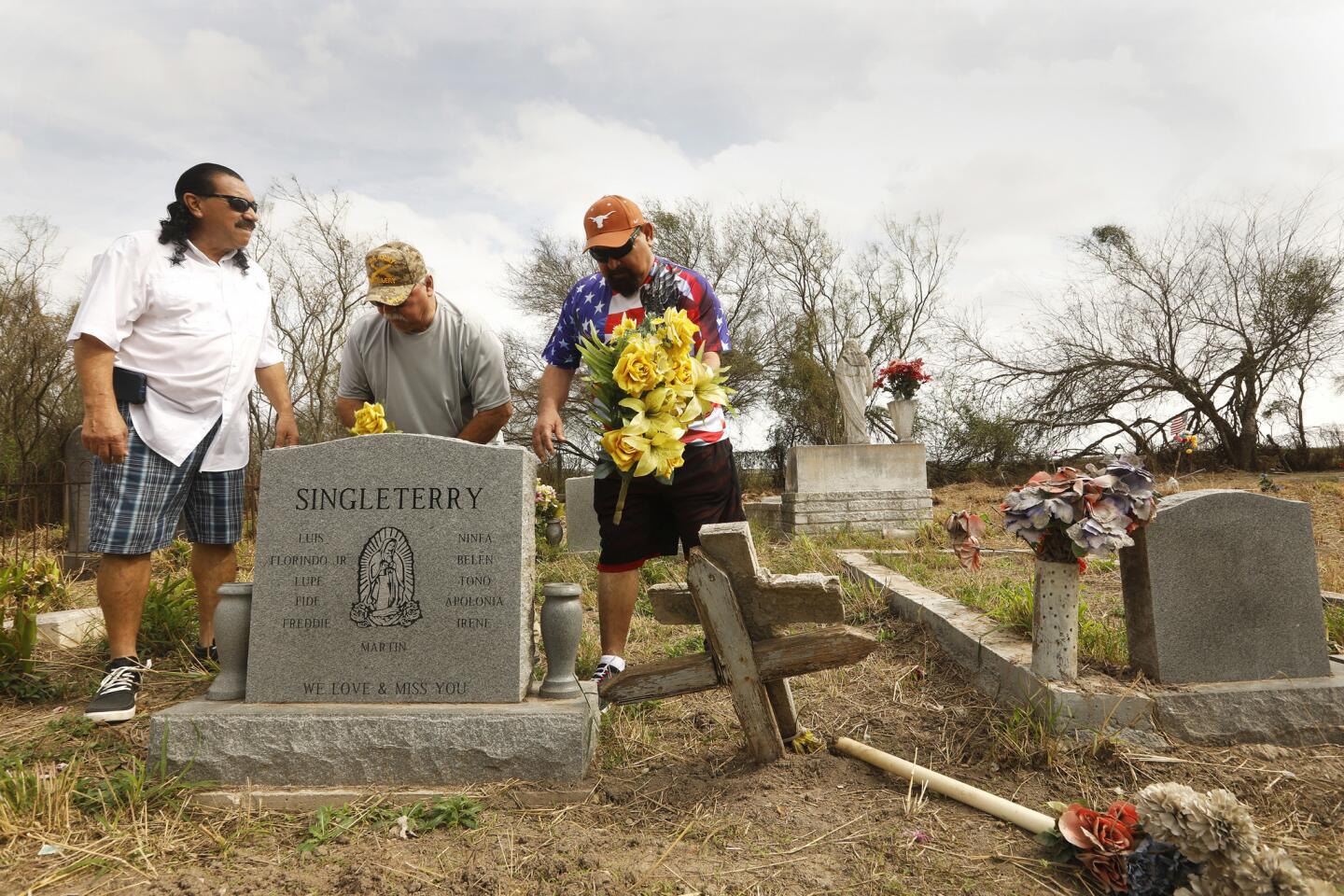
Alfredo Singleterry, 59, left, Florindo Singleterry, 69, center, and Jose Singleterry, 66, visit family graves.
(Carolyn Cole / Los Angeles Times)Advertisement
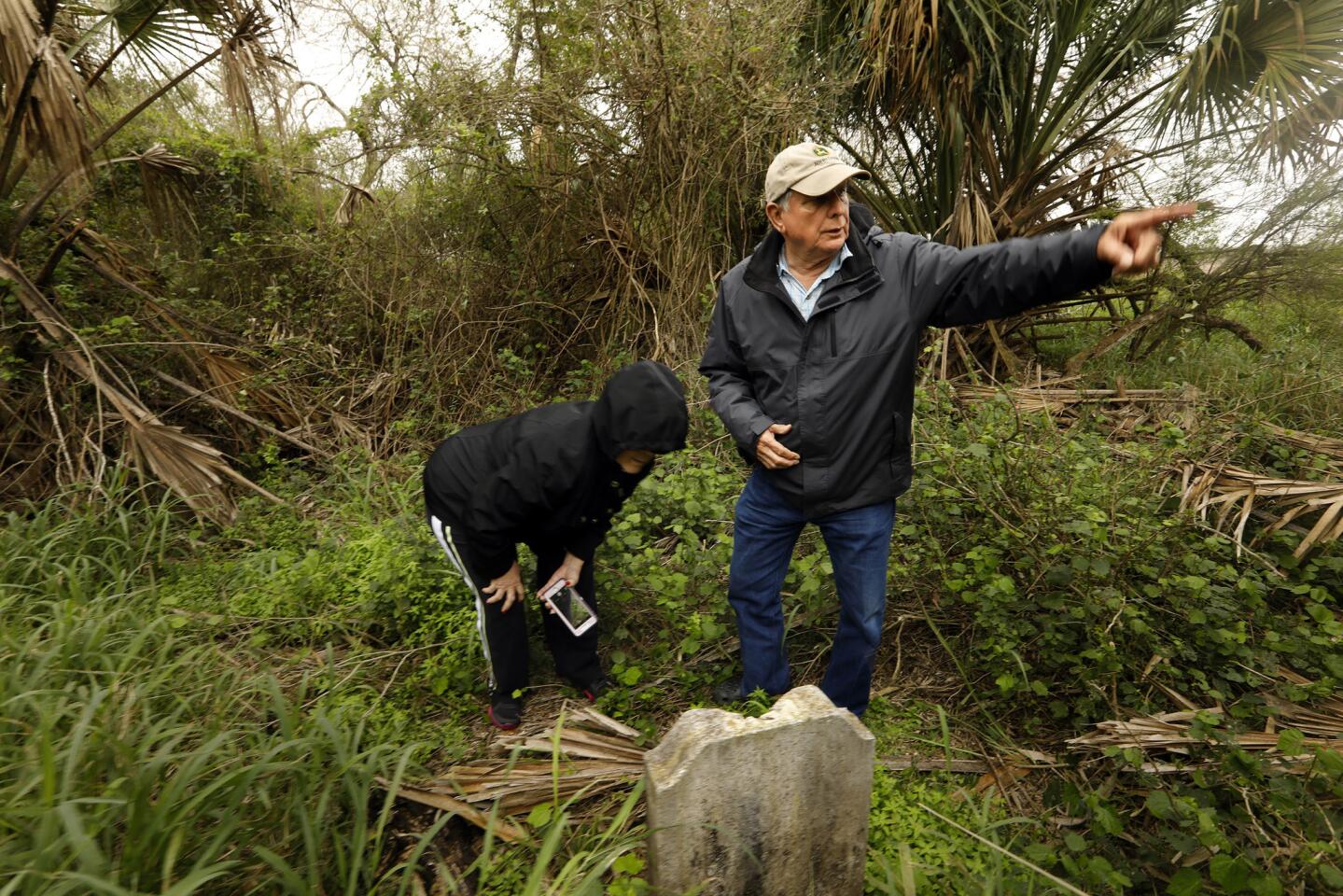
Juan Granado, 73, and his wife, Esmeralda, 69, look at gravestones in an overgrown cemetery not far from their home in Brownsville, Texas. They hadn’t been allowed to visit the cemetery, which is south of the border fence, in a decade.
(Carolyn Cole / Los Angeles Times)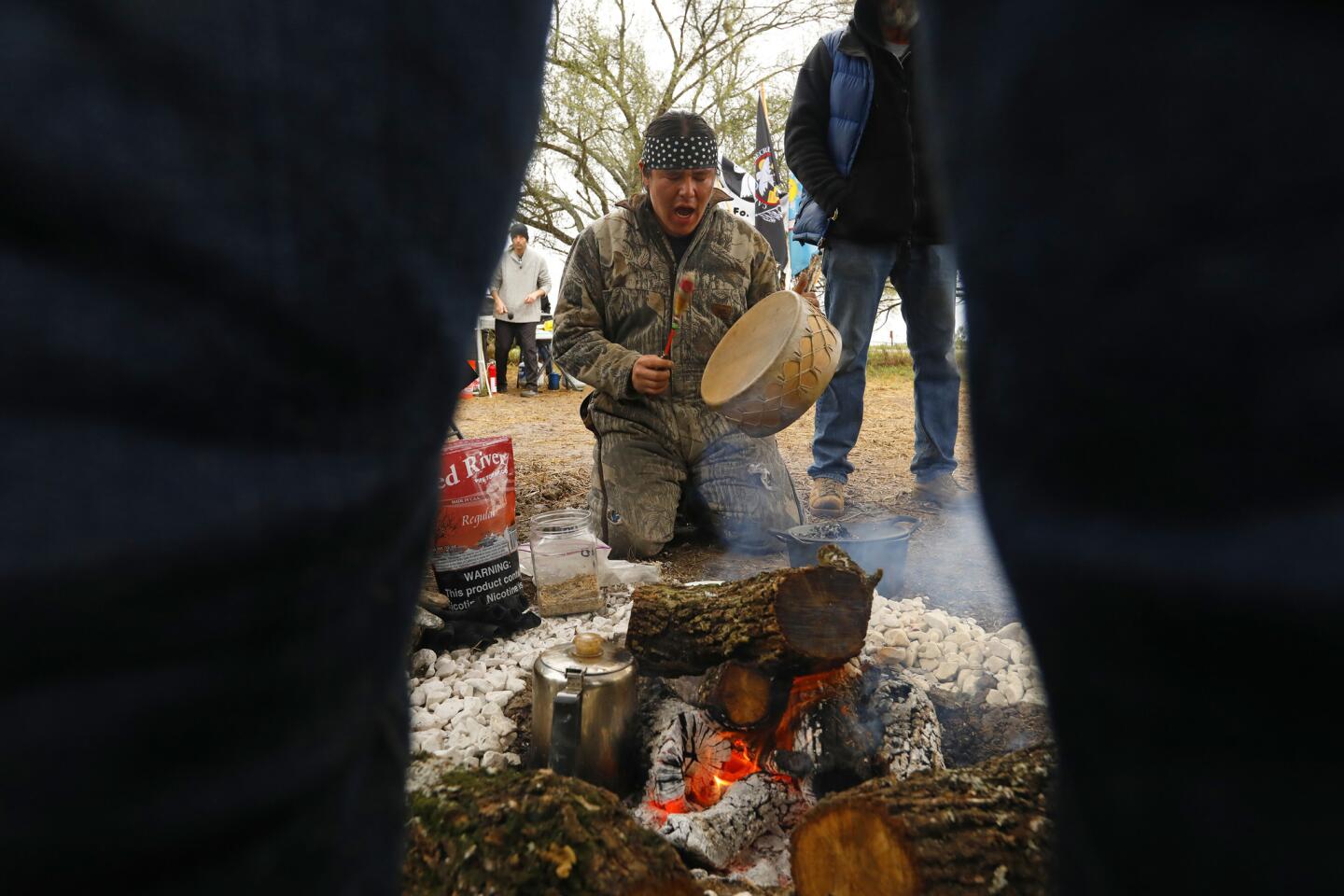
Protesters gather in a prayer circle at a cemetery that could be walled off if a border fence is built.
(Carolyn Cole / Los Angeles Times)